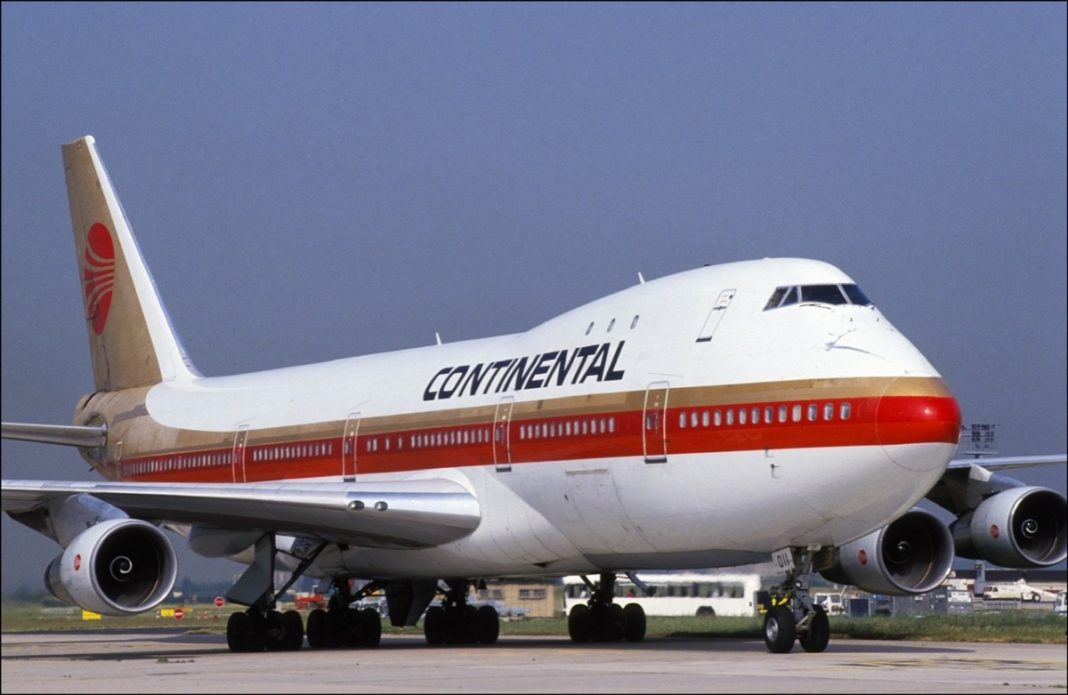Robert F. Six was truly a pioneer when it came to commercial aviation in the United States. He took the helm at Continental Airlines in the middle of the 1930s and served as its head for over four decades. The legendary businessman retired in the early 1980s and passed away in 1986 at the age of 79.

A direct approach
Six’s strong presence in the airline industry was a reflection of his character. He stood tall at 6 foot 4 inches and his determined, risk-taking personality helped him achieve great success over the years. He was praised for his eye for detail while being hands-on with the projects that his company took on.
According to The New York Times, Joe Daley, a former airline executive who was a spokesman for the Six’s family, said the following about the businessman:
“You saw him everywhere, in the tire shop, in the hostess division. The Harvard Business School never told him how to do anything.”
His charisma also saw him make an impact outside the aviation world. He loved to be outdoors and was keen to emulate the fast-draw artists of the Old West. Additionally, he married two famous actresses. He married Ethel Merman, and following a divorce, he married Audrey Meadows.

Early progress
Six was born on June 25th, 1907, in Stockton, California. After taking flying lessons, he received his pilot’s license in 1929. Motivated with this achievement, he bought an OX-5 Travelair from Walter Beech. The National Aviation Hall of Fame shares that he used this plane to establish the Valley Flying Service. This one-plane airline took passengers on scenic tours and would race on the weekends.
During the Great Depression, Six’s company went bankrupt. Therefore, he traveled to China and worked for Chinese National Aviation as a co-pilot. Following this, he returned to the US in 1937 and took an interest in a budding carrier called Varney Speed Lines.
This business was seeking a cash injection. During this period, Six was married to Henriette Ruggles (who he divorced in 1952). She was the daughter of William Erhard, the chairman of the board of Charles Pfizer & Company. So, he took a $90,000 loan from his father-in-law and bought a 40% interest in the airline.
New heights
On July 8th of that year, the company was renamed Continental Air Lines, which was later amended to Continental Airlines. Six changed the name because he wanted the carrier to show his intent of flying across every direction in the United States.
In 1938 he was named president of the airline, but a few years later, the United States will mobilize its aviation industry for support in World War II. Six spent part of the conflict in the Army Air Transport Command as a lieutenant colonel. He spent the rest of his service as a reserve officer in charge of Continental Airlines’ bomber modification center in Denver, Colorado.
After the end of World War II, Six began working on Continental’s expansion by winning a series of routes from the Civil Aeronautics Board (CAB). These moves helped the airline progress through Texas, New Mexico, Arizona, and California.
Continental started to grow steadily. Subsequently, in 1955, Six managed to win the route between Chicago, Denver, Kansas City, and Los Angeles. Under his leadership, the airline would continue to expand across the skies over the next few decades.
Several new routes were taken on across US mainland along with services to destinations in the Pacific. For instance, there was significant progress for Continental in Hawaii, Guam, Micronesia, American Samoa, and Okinawa.
Innovative introductions
Six was a believer that increased traffic, not higher rates, was the key to a thriving aviation industry. This idea surprised the market when he introduced the economy fare on the route between Chicago and Los Angeles in 1962. The following year, he reported that revenue for the first quarter was up 10%.
This pioneering initiative was the first of many for Continental. The company would introduce several other low-cost fares for passengers, enabling many new market segments to the air for the first time ever. One of the most popular promotions was the economy excursion fare. This feature had cut standard coach fares by over 25 percent%.
The 1970s saw great international expansion for Six. For example, in 1977, Continental started daily round trips between Saipan, Mariana Islands, and Japan. Then, in 1978, the carrier launched DC-10 service between Los Angeles and Taipei, via Honolulu and Guam. The airline also began flying from Los Angeles to Australia via Honolulu, American Samoa, Fiji, and New Zealand in 1979.

A new generation
1978’s airline deregulation enabled Continental to enter into new profitable markets. However, it also had a negative impact on the airline with the rise of low-cost carriers and a drop in high-quality customer service across the industry.
Even with the discounted fares, Six believed in impressing customers. For instance, passengers would receive champagne for breakfast and had a choice of meals in coach. They could even make hotel reservations while onboard the plane.
After Six’s retirement in 1982, he saw the financial struggles of Continental before being bought by Texas Air. Six noted that 1977 was the last year of service in airlines as it was the year before deregulation.

Altogether, Six’s outgoing and driven personality saw him be involved directly with the progress of his ventures. He would often be spotted mingling with pilots at the flight deck and even ate with staff at the company cafeteria. He will be remembered as a true pioneer of one of the most important eras in aviation history.
What are your thoughts about Robert Six’s story? Did you fly with Continental while he was in charge of the airline? Let us know what you think of the pioneer and the carrier in the comment section.
[ad_2]
Source link


